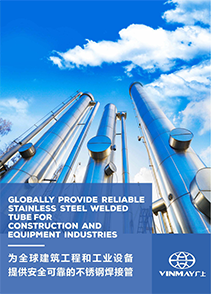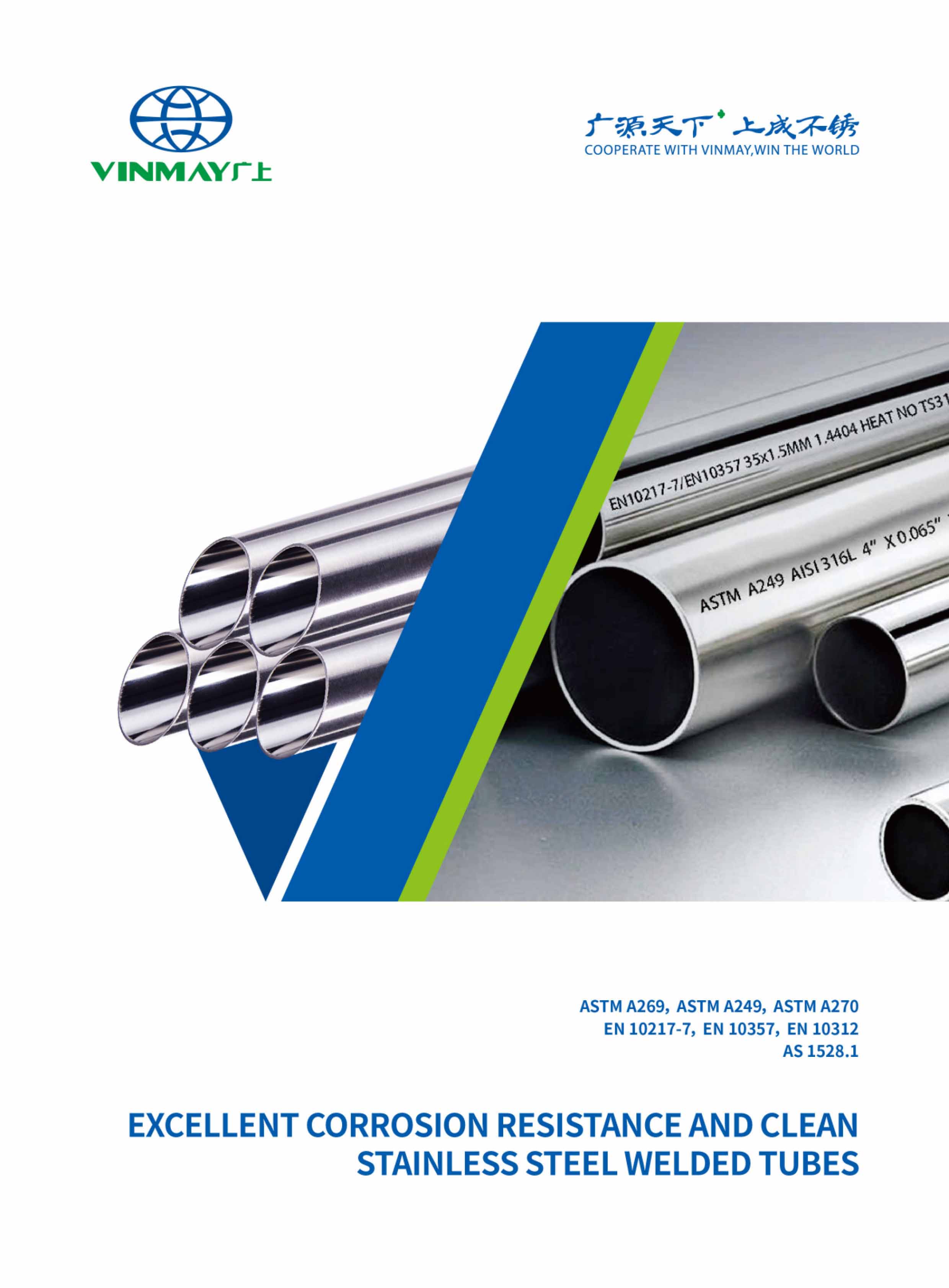The selection of different pipe materials is vital for ensuring optimum performance in plumbing and construction systems. Among the different pipe materials, PVC pipes stand out for their cost-effectiveness and versatility in various applications, while PEX offers flexibility and resistance to temperature variations. Copper pipes are prized for their durability and antimicrobial properties, whereas galvanized steel pipes provide robust structural support with excellent corrosion resistance. Cast iron pipes, valued for sound insulation, and stainless steel, known for superior strength and high corrosion resistance, are also notable choices.
Additionally, specialty pipe materials such as ABS and high-density polybutylene cater to specific industry needs. Understanding the characteristics of different pipe materials allows for informed decisions tailored to specific project demands.
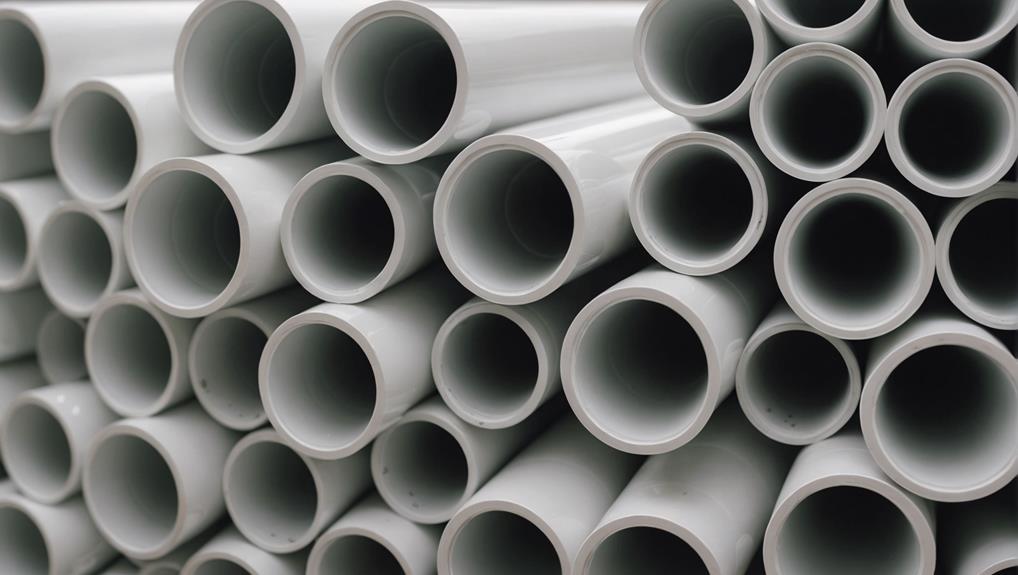
Polyvinyl Chloride (PVC) pipes are a cornerstone in modern plumbing, offering a versatile solution across a wide range of applications, both residential and industrial. As one of the most commonly used different pipe materials, PVC pipes are constructed from a thermoplastic polymer that provides excellent durability and resistance to chemical corrosion. Their lightweight nature facilitates ease of installation, minimizing labor costs and time. The compatibility with solvent cement connections guarantees robust joint integrity under various pressure conditions, an essential factor in maintaining system reliability.
Advances in manufacturing have enhanced PVC's pressure handling capabilities, making them suitable for a wide range of applications, from sanitary waste lines to vent systems. However, their susceptibility to thermal deformation limits their use in high-temperature scenarios.This makes them less suitable for certain industrial applications requiring high-temperature resistance.
PVC pipes remain a cost-effective and durable choice for many plumbing projects, balancing affordability with performance. Whether for cold water lines, sanitary drainage, vent piping, or irrigation systems, PVC remains a widely used and reliable material among different pipe materials.
Read More: Stainless Steel vs. PVC Pipes
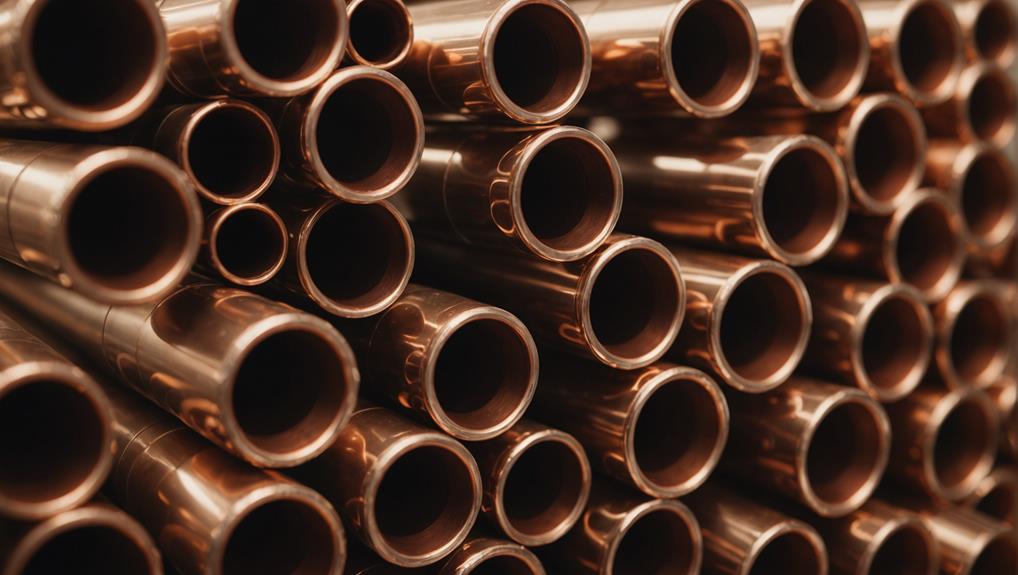
Copper pipes are a top choice among different pipe materials for plumbing professionals and homeowners seeking reliability and longevity in water supply systems. With their outstanding corrosion resistance and thermal conductivity, copper pipes are ideal for hot and cold water applications, making them one of the best residential and industrial plumbing pipe materials.
Available in rigid and flexible variations, copper pipes are classified into Type K, L, and M, each indicating different wall thicknesses and pressure ratings. Type K offers the thickest walls, making it suitable for underground installations, while Type M provides a more cost-efficient solution for residential settings.
One of copper's significant advantages over other different pipe materials is its impermeability, ensuring a safe and uncontaminated water supply. This characteristic makes copper pipes a preferred choice for potable water lines. Despite their higher initial cost, the durability and recyclability of copper pipes offer long-term value and sustainability.
Recommended: Copper VS. Stainless Steel Pipe
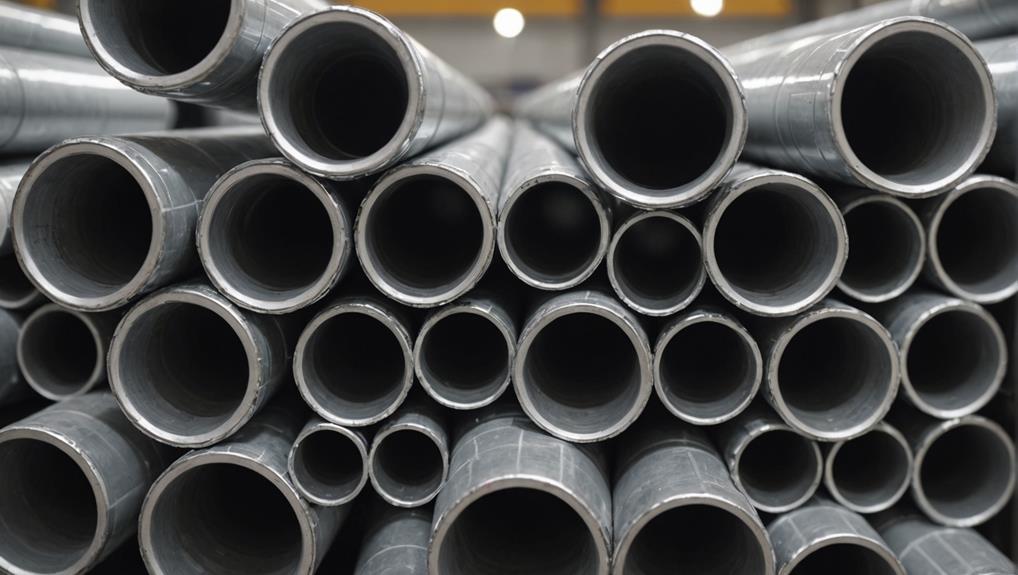
Galvanized steel pipes, recognized for their robust zinc coating, stand out among different pipe materials due to their exceptional corrosion resistance. This makes them an excellent choice for applications demanding durability, especially in outdoor plumbing and industrial water systems where moisture exposure is a concern.
The galvanization process involves the application of a protective zinc layer to iron or steel pipes, notably extending their lifespan in comparison to uncoated steel. These types of pipes are commonly used in water supply systems of older constructions, they are typically cut using reciprocating saws or hacksaws and joined with threaded fittings.
However, it is critical to recognize their susceptibility to internal rusting over time, which can compromise water quality and lead to blockages. Consequently, their use in new installations has diminished.
Read Also - Stainless Steel Pipe Vs Galvanized
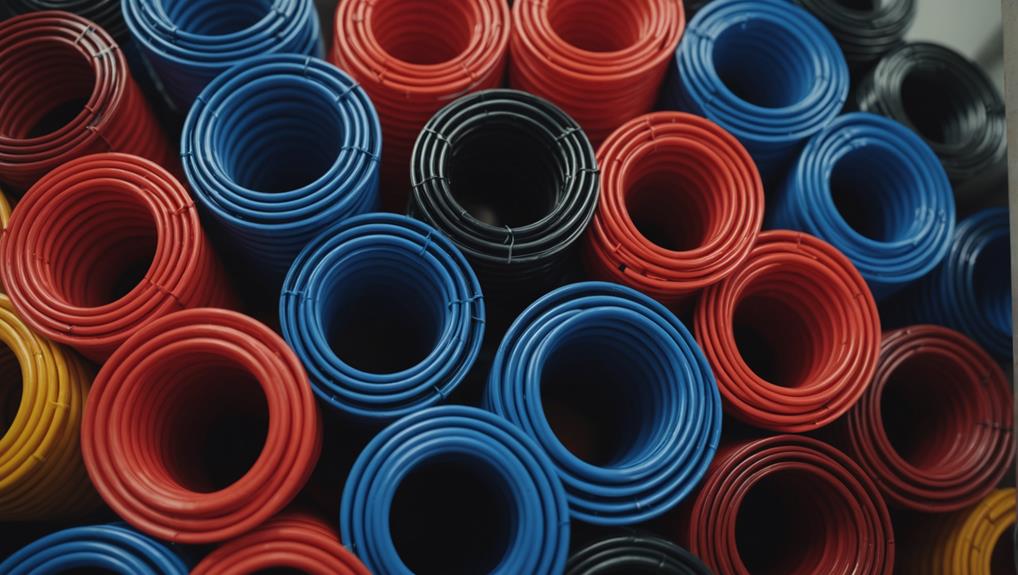
PEX (Cross-linked Polyethylene) pipes stand out as a superior solution among different pipe materials for modern plumbing systems due to their remarkable flexibility and resilience to temperature fluctuations. Comprised of cross-linked high-density polyethylene, PEX pipes exhibit outstanding thermal resistance, withstanding temperatures ranging from below freezing to 200°F - making them one of the best pipe materials for residential plumbing in both hot and cold water applications.
Moreover, their inherent flexibility reduces the need for fittings, minimizing potential leak points and expediting installation. PEX's corrosion resistance guarantees an extended service life, free from the pinhole leaks that plague metal alternatives. The installation process is streamlined through barbed fittings and crimping rings, enhancing both efficiency and reliability.
Consequently, PEX pipes deliver a robust, cost-effective plumbing solution that meets rigorous industry standards.
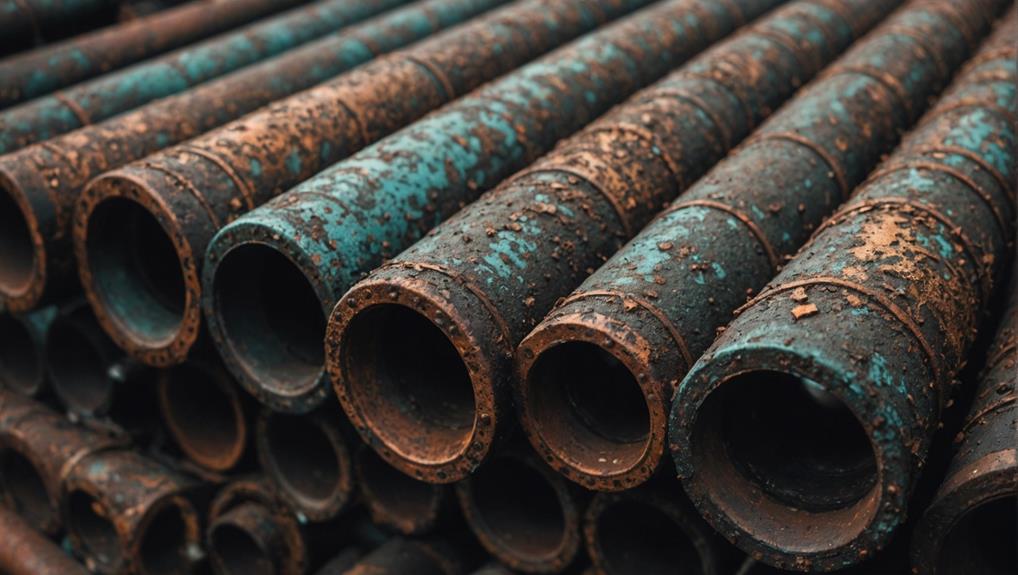
Cast iron pipes stand out among different pipe materials for their exceptional durability and superior noise reduction capabilities, making them particularly suitable for high-rise buildings and urban settings where sound dampening is vital.
With a service life often exceeding 50 years, cast iron pipes are valued for their strength and resilience. Their natural resistance to fire and high-pressure systems makes them particularly suitable for demanding infrastructure projects and stormwater management systems. These qualities position cast iron as one of the best pipe materials for noise reduction and long-term performance.
However, installation requires expertise, as cutting and joining demand specialized tools and techniques, such as pipe cutters and hubless coupling systems. Their substantial weight also makes them more challenging to handle compared to lighter pipe materials for plumbing. Despite these challenges, proper installation ensures peak performance, reinforcing cast iron's reputation as a dependable choice.
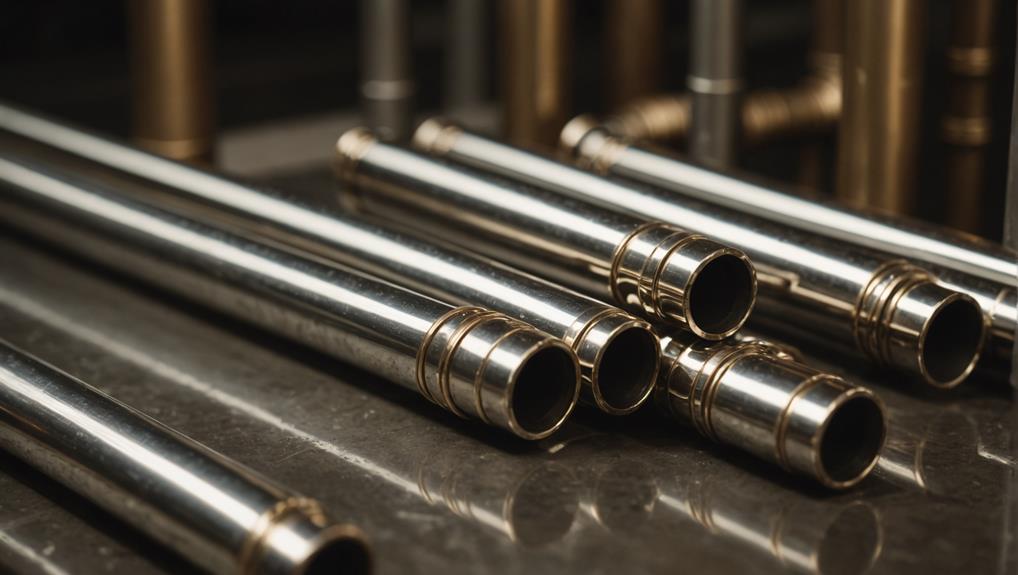
Chromed Brass Pipes are distinguished by their bright, shiny chrome finish, making them the ideal choice among different pipe materials for applications where aesthetic appeal is paramount. Typically employed in exposed waste line applications, these pipes offer both functionality and visual superiority.
Their construction consists of a brass core, plated with a layer of chrome, ensuring durability and resistance to tarnish while maintaining a polished appearance. Cutting and fitting chromed brass pipes is straightforward, utilizing a hacksaw for precision cuts, and slip fittings for secure connections. This simplicity in handling makes them a preferred option for professional plumbers and DIY enthusiasts alike.
Their prevalent use in visible drain and trap installations underscores their versatility and importance in modern plumbing solutions.
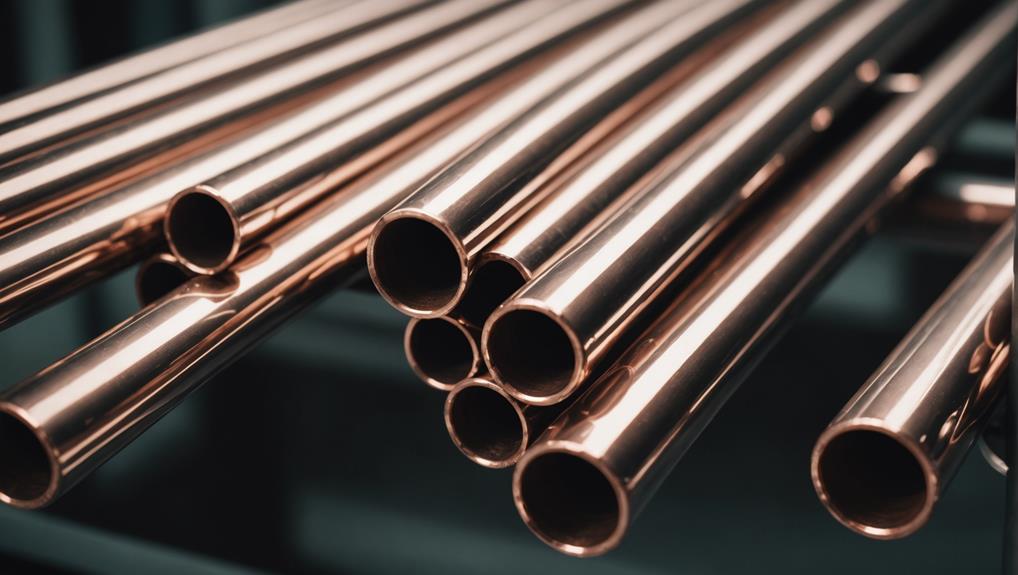
The appeal of chromed copper pipes lies in their aesthetic and functional benefits, making them an excellent choice among different pipe materials for modern plumbing designs. These pipes feature a bright, shiny chrome finish that enhances any exposed water supply line, offering an elegant solution for modern plumbing designs.
The smaller diameter of chromed copper ensures space efficiency while maintaining structural integrity. Easily cut with a tubing cutter or hacksaw, these pipes are joined using compression fittings, allowing for precision and control in installation.
Their corrosion resistance and durability make them suitable for potable water applications, providing long-term reliability. In environments where visual appeal and performance are essential, chromed copper pipes deliver an ideal balance of form and function.
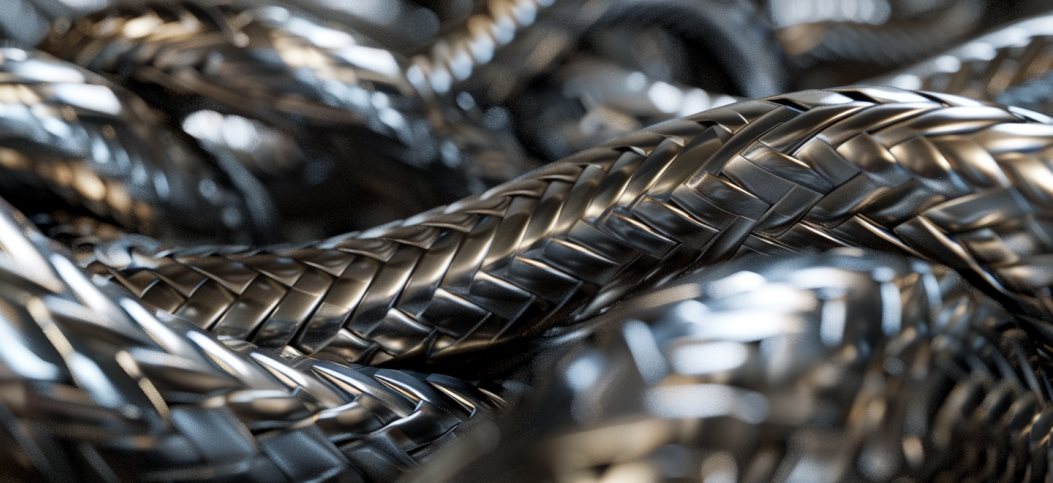
Braided pipes are a standout option among different pipe materials for applications that require flexibility, strength, and reliability. These pipes consist of a flexible inner tube, typically made from EPDM rubber or PVC, encased in a woven metallic braid often composed of stainless steel.
The braided layer enhances tensile strength and prevents kinking, making these pipes suitable for high-pressure applications such as water heater connections and washing machine hookups. Their ability to withstand temperature fluctuations and resist corrosion further contributes to their durability.
Installation requires minimal tools, often involving simple threaded fittings, which guarantees a secure seal. For applications demanding resilience and adaptability, braided pipes offer a superior solution, balancing performance and ease of installation.
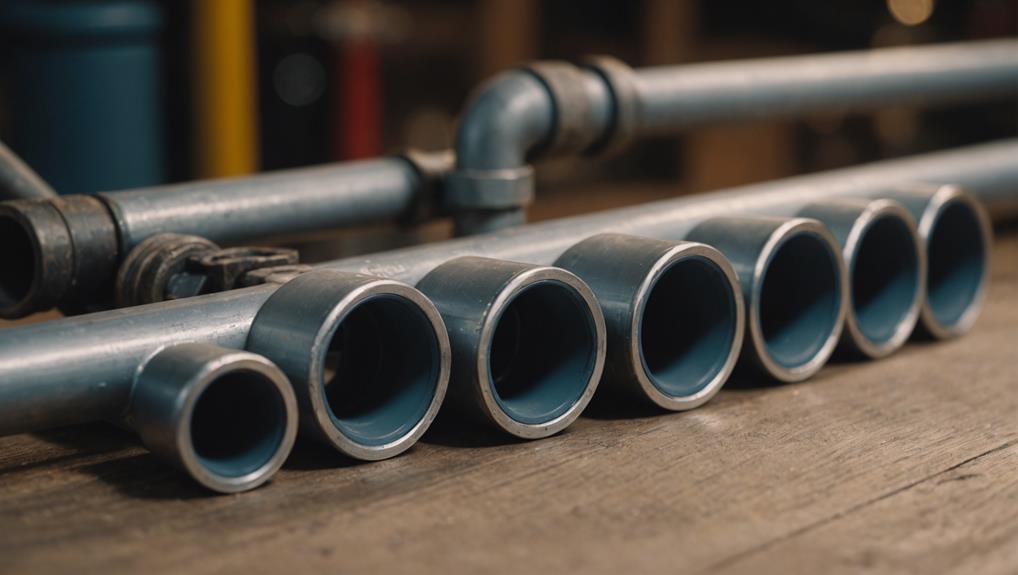
Polybutylene pipes, once heralded as a revolutionary material used in plumbing systems due to their low cost and ease of installation, have since fallen out of favor due to significant durability issues. These pipes, primarily used from the late 1970s to the mid-1990s, were composed of a plastic resin known as polybutylene. Despite their initial popularity, polybutylene pipes exhibited a propensity for degradation when exposed to oxidants commonly found in public water supplies. This led to micro-fractures and eventual pipe failure.
Installation was straightforward, using crimp or compression fittings; however, the material's susceptibility to chemical interactions proved detrimental over time. Consequently, the industry has shifted towards more reliable alternatives like PEX or CPVC, ensuring better longevity and reliability in plumbing systems.
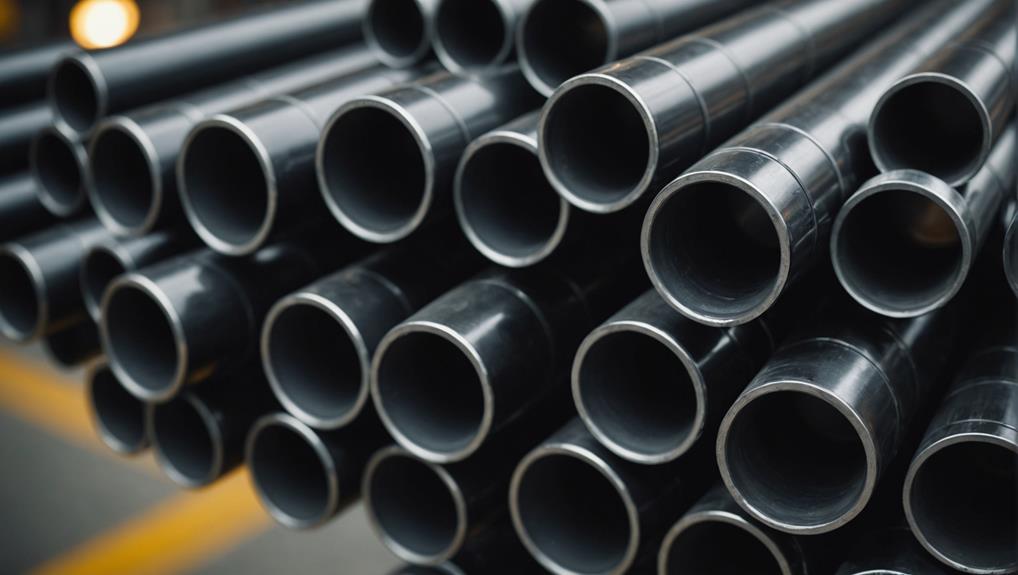
Black steel pipes, also known as black iron pipes, are a trusted choice among different pipe materials for natural gas and propane supply lines. These pipes, characterized by their matte black exterior, are manufactured without a galvanized coating, allowing for a more cost-effective solution in gas distribution. Their robust nature guarantees durability and reliability under high-pressure conditions - making them one of the best pipe materials for gas supply lines.
Black steel pipes are typically joined using threaded fittings, facilitating a secure connection vital for gas transmission. The material's inherent strength offers resistance to physical impact and temperature fluctuations, ensuring operational stability. Professionals value black steel for its ease of cutting and threading, enabling precise customization to meet specific project requirements. This material remains a staple in gas pipeline installations due to its proven performance and cost-efficiency.
Aluminum pipes are a versatile and efficient option among different pipe materials, widely used across industries such as construction, transportation, food processing, and aerospace. Known for their excellent strength-to-weight ratio and versatility, aluminum pipes have become one of the best lightweight pipe materials for industrial applications where both performance and cost-effectiveness are critical. Aluminum is also highly resistant to oxidation and has a natural ability to resist corrosion, making it ideal for applications in harsh environments.
In addition to their practical advantages, aluminum pipes are also relatively easy to fabricate and form into different shapes and sizes. As a result, they are used in diverse applications, including plumbing, HVAC systems, heat exchangers, and more. However, like any material, aluminum pipes come with their own set of advantages and limitations.
You may also like: Stainless Steel Tube VS. Aluminium Tube
Stainless steel pipes are an excellent choice for plumbing among different pipe materials, offering unmatched durability and corrosion resistance. These pipes offer superior durability and reliability, particularly in coastal or industrial applications where exposure to corrosive elements is prevalent. Composed primarily of chromium, stainless steel forms a passive layer that protects against rust and oxidation, ensuring longevity and structural integrity.
Available in both rigid and flexible forms, stainless steel pipes can accommodate a range of installation requirements. These pipes are commonly joined through couplings or welding, providing secure and durable connections, making them one of the best pipe materials for high-pressure systems. While the initial cost is higher than other materials, the reduced maintenance and extended service life can yield long-term cost efficiencies. Stainless steel's aesthetic appeal also adds value in architectural applications.
As one of the leading stainless steel tubing manufacturers, Vinmay specializes in high-quality stainless steel welded pipes designed for superior performance in demanding environments. We deliver durable, corrosion-resistant piping solutions tailored to your specific industrial and commercial needs.
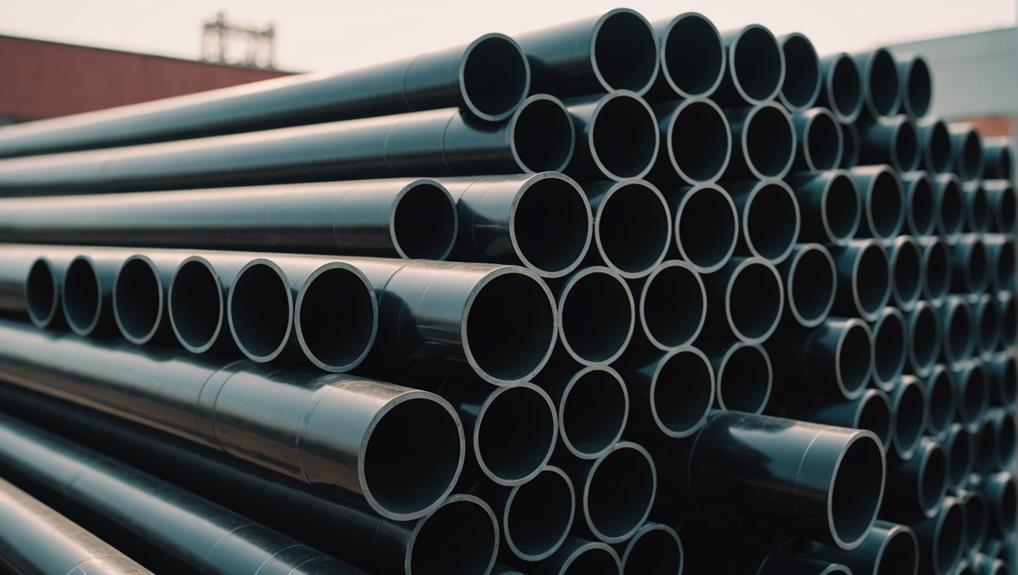
High-Density Polyethylene (HDPE) pipes stand out among different pipe materials due to their exceptional durability and flexibility, making them one of the best pipe materials for water distribution systems and large-scale infrastructure projects. HDPE pipes are made of high-density polyethylene, offering superior resistance to environmental stressors such as corrosion, chemical exposure, and UV radiation. These attributes ensure minimal maintenance and extended service life, essential for demanding applications.
HDPE's flexibility allows for ease of installation, reducing the need for extensive fittings and joints, which are potential failure points. This material also supports trenchless technology methods, enhancing installation efficiency and reducing overall project costs.
Moreover, HDPE pipes are available in various diameters and pressure ratings, providing versatility for diverse applications, including water distribution, sewage systems, and industrial fluid handling.
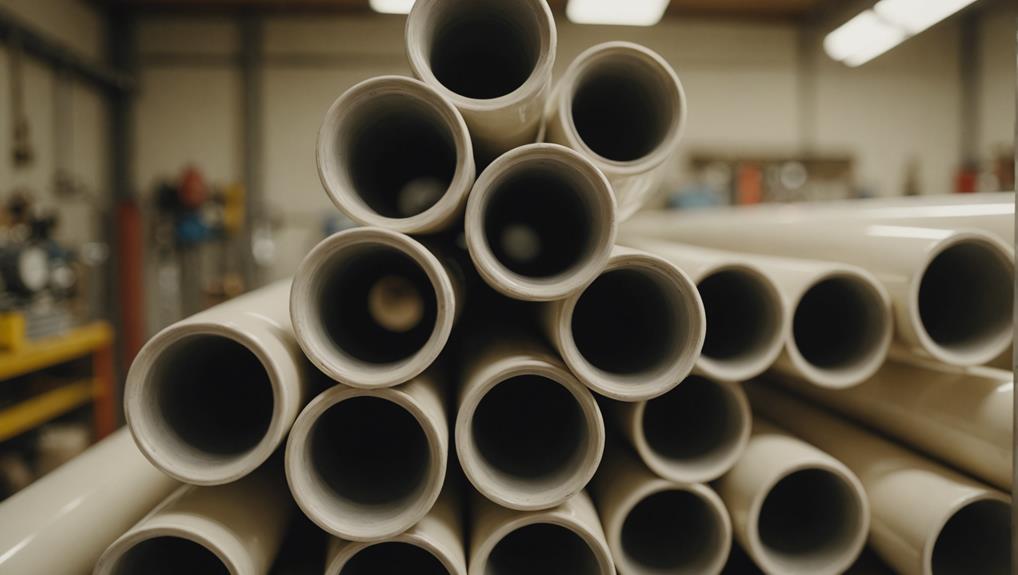
CPVC (Chlorinated Polyvinyl Chloride) pipes stand out among different pipe materials for their superior thermal resistance, making them one of the best pipes for hot water plumbing in both residential and commercial systems. These pipes are engineered to withstand higher temperatures compared to standard PVC, due to an additional chlorination process that enhances their structural integrity.
The nominal pipe size (NPS) and copper tubing size (CTS) standards guarantee compatibility with various fittings, facilitating seamless integration into existing plumbing systems. CPVC's resistance to corrosion and chemical degradation further reinforces its utility in environments where fluid purity is paramount.
Installation is efficient, employing solvent cementing techniques that secure leak-proof joints. Cost-effective and durable, CPVC remains a preferred material for reliable hot water distribution systems.
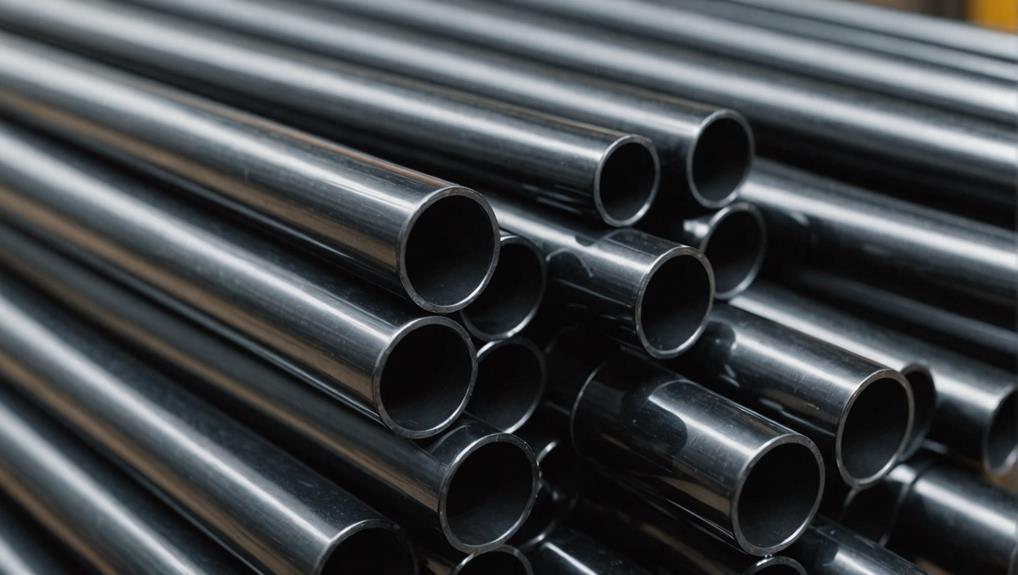
Acrylonitrile Butadiene Styrene (ABS) pipes stand out among different pipe materials for their exceptional impact resistance and durability. These features make ABS an excellent option for systems where strength and reliability are critical, especially in drain, waste, and vent (DWV) systems.
Known for their robust performance, ABS pipes are resistant to a variety of chemicals and maintain their structural integrity under demanding conditions. Their thermoplastic composition allows for fast and secure installation using solvent welding, forming strong, leak-proof joints without the need for a primer—setting them apart from PVC.
While ABS pipes are ideal for indoor plumbing systems, they can degrade when exposed to prolonged UV radiation. Therefore, additional protective measures are required for outdoor use to maintain long-term performance.
Lightweight and easy to handle, ABS pipes simplify installation and reduce labor time, making them one of the best pipes for drainage systems in both residential and commercial settings.
Selecting the best plumbing pipe is essential for achieving a plumbing system that is durable, efficient, and cost-effective. With various types of plumbing pipes available, it’s crucial to choose the right material for your specific needs. Below are key factors to consider when deciding on the best pipe material for plumbing projects.
Start by determining the intended use of the pipe:
Match the pipe material to your system’s temperature and pressure demands:
Long-term performance is critical for reducing future repair costs:
Budget and installation complexity can impact your project timeline:
Eco-friendly materials reduce environmental footprints:
Always verify that your selected pipe material meets local building regulations:
| Plumbing Pipes | Cost per Foot | Durability | Temperature Rating | Pressure Rating | Ease of Installation | Applications |
|---|---|---|---|---|---|---|
| Copper Pipes | High | Very High | High | High | Medium | Potable water, heating systems, gas lines |
| PEX (Cross-linked Polyethylene) Pipes | Medium | High | Medium | Medium | Very High | Indoor plumbing, radiant heating, repiping |
| PVC (Polyvinyl Chloride) Pipes | Low | Medium | Low | Low | Very High | Drainage, venting, water supply (cold water only) |
| CPVC (Chlorinated Polyvinyl Chloride) Pipes | Medium | High | High | Medium | High | Hot and cold water supply, potable water |
| Braided Pipes | High | Medium | Low | Medium | Very High | Appliance connections, fixtures, washing machines |
| ABS (Acrylonitrile Butadiene Styrene) Pipes | Low | Medium | Low | Low | Very High | Drainage, venting, waste water systems |
| Cast Iron Pipes | High | Very High | Low | Very High | Low | Sewage, waste lines, vent stacks |
| Galvanized Steel Pipes | Medium | Medium | Low | High | Medium | Water supply (rarely used now), older systems |
| Stainless Steel Pipes | High | Very High | High | Very High | Medium | Potable water, heating systems, industrial uses |
| Chromed Brass Pipes | High | Medium | Medium | Medium | Medium | Plumbing fixtures, decorative applications |
| Chromed Copper Pipes | High | Very High | High | High | Medium | Potable water, heating systems |
| Black Steel/Black Iron Pipes | Medium | High | Low | High | Medium | Gas lines, fire sprinkler systems |
| Polybutylene Pipes | Low | Low | Medium | Low | Medium | Water supply (historically used, now phased out) |
| High-Density Polyethylene (HDPE) Pipes | Medium | Very High | Medium | High | Medium | Industrial, municipal, drainage |
By considering the type of application, temperature and pressure requirements, durability, cost, environmental impact, and local building codes, you can confidently choose the most suitable pipe material for your project. Balancing these factors will ensure a plumbing system that is safe, efficient, and long-lasting.
Still unsure about the best pipe for your needs? Contact us now, and we can help you compare materials or suggest the ideal solution!
The environmental impacts of pipe materials involve sustainability factors, cost implications, and longevity considerations. Durability comparisons highlight materials' lifespan, while installation challenges affect emissions. Sustainable choices reduce ecological footprints, balancing environmental responsibility with economic and functional efficiency in plumbing systems.
Approximately 83% of consumers report water quality concerns related to taste impact and odor influence. Pipe materials like copper and galvanized steel can exacerbate these issues due to corrosion risks, while environmental concerns continue to shape material selection.
Corrosion effects on pipe materials can lead to public health risks by introducing material toxicity, resulting in water contamination. This adversely impacts drinking water quality, requiring stringent monitoring to guarantee a safe water supply and mitigate potential health hazards.
Pipe materials greatly influence plumbing noise levels through noise reduction capabilities, thermal conductivity, and material durability. Corrosion resistance impacts longevity, while installation cost varies, affecting overall acoustic performance and maintenance in plumbing systems.
Maintenance of pipe materials requires a meticulous balance between corrosion prevention and inspection schedules. Employ cleaning methods and repair techniques to guarantee material longevity, performance expectations, and cost considerations. Conduct compatibility testing for chemical resistance to optimize budget planning.
The selection of different pipe materials is crucial for optimizing plumbing system performance, as each material provides unique advantages for specific applications. Whether considering pipe material options for residential, commercial, or industrial systems, the right choice ensures long-term efficiency. While concerns about cost may arise, investing in high-quality pipe materials like copper, PVC, or PEX can yield significant long-term savings through enhanced durability, reduced maintenance, and improved performance.
A comprehensive understanding of the properties of various pipe materials, such as thermal resistance, corrosion resistance, and ease of installation, allows professionals to make well-informed decisions. Ultimately, selecting the right plumbing pipe materials enhances the reliability and longevity of plumbing infrastructures.
Need help selecting the perfect plumbing pipe for your project? Contact us today for expert advice and product recommendations!
